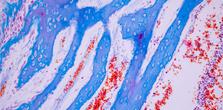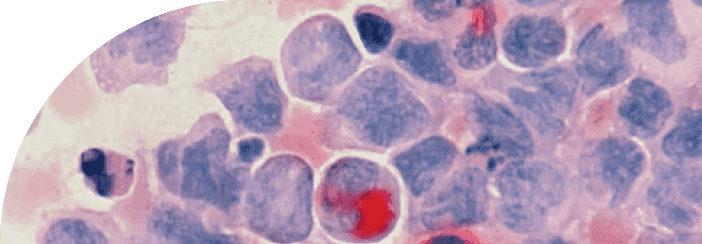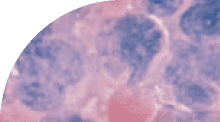
Rapamycin
The most powerful tool to stop the acceleration of aging caused by mTOR dysfunction and cellular senescence.
We'll be covering how you can reduce senescent cell burden with respect to aging and disease.
Cellular Senescence
6 mins
By: Daniel Tawfik
Cellular senescence accumulation is closely associated with a wide array of diseases and disorders typically linked to aging, diseases such as alzheimers.
The clinical use of senotherapeutic compounds is hypothesized, with strong evidence, to reduce your chances of senescent cell (SC) accumulation. Senotherapeutics can be broken down into two classes, senomorphics and senolytics
Reduction of cell senescence is key to lowering your likelihood of suffering from various age related diseases.
Cellular senescence is a hallmark for the aging processes of a cell and is a state in which cellular resistance to apoptosis is higher, the production of senescence-associated secretory phenotype (SASP) is taking place, mitochondrial dysfunction occurs, as well as changes within the cell's DNA and its supporting molecules. It is quite efficient at stopping the growth of tumors, however the cell remains alive in a non-functional, static state.
Senescence is caused by stress and developmental signals. A cell has three ways of dealing with stress; repair, apoptosis, and senescence. The decision of which option the cell takes is dependent on the degree of stress the cell receives.
You can reduce the level of senescent cells via the intermittent use of available senotherpeutics agents to essentially supress or clean out and remove these static cells. Additionally the use of SASP inhibitors and/or other SASP modulators will reduce the burden of SC’s but need to be taken on a more regular schedule than senolytic agents.
Cell Senescence is commonly induced via
damage to DNA
When DNA is damaged a DDR or DNA damage response is induced. DDR induction is commonly caused by damage to telomic structures via the shortening of telomeres, dysfunction of telomeres, as well as mutations, radiation damage, and alkylating agents.
reactive metabolites
Reactive metabolites are molecules that are commonly electron deficient molecules which cause them to “react” to other non-reactive molecules(enzymes, receptors, cell membranes, and DNA) by forming a covalent bond with them. This reaction causes changes to the protein's structure or the DNA’s structure.
A protein's structure determines a protein's function. When misfolded proteins are detected by the cell via antigens, an immune response is induced.
DNA structure is directly correlated to gene expression, so any changes to your DNA’s structure can lead to various cellular problems.
inflammation
Cellular inflammation is the increased activity of the gene transcriptor, Nuclear Factor-KappaB (NF-kB).
NF-kB is found in every cell and is heavily modulated by essential fatty acids.
oncogenes
These genes were once beneficial to the cell via regulation of cell growth but have undergone mutation which causes them to turn into oncogenes which can cause uncontrolled cellular growth which can lead to the proliferation of cancerous cells.
These mutational genes can be inherited from your parents or can be caused by exposure to cancer causing compounds.
mitogens
Mitogens are non-specific stimulants of the cellular cycle and induce mitotic cell division.
proteotoxic stress
Proteotoxic stress is caused by protein aggregation, unfolded protein responses, and the activation of the mTOR pathway.
Proteotoxic stress can lead to the loss of proteostasis, which is the loss of protein regulation within a cell.
Proteostasis is your cell's way of influencing the life cycle of a protein from synthesis to degradation.
damage-associated molecular patterns (DAMPs)
These molecules are released from dying and damaged cells due to pathogenic activity and act as an early warning to surrounding cells.
DAMPs promote the inflammatory response commonly associated with cell senescence and are biomarkers for cell death and dysfunction.
These inducers cause a cell to express the SC phenotype via activation of p16INK4a/Rb and/or p53/p21 which is determined via the types of inducers and the types of cells affected. The SC phenotype is characterized with irreversible arrest of cell growth, SASP production, resistance to apoptosis, persistent DNA damage, and epigenetic structural changes.
The SASP is a phenotype that is characterized by pro-inflammatory cytokines, chemokines, and extracellular matrix-degrading proteins that can induce senescence in normal healthy cells. Now the specific make-up of the SASP is highly dependent on the type of cell affected, what induced that cell to enter senescence, the surrounding environmental factors, and how that particular cell dealt with suppression.
Now, SC's are essentially non-dividing cancer cells but have the same metabolic changes as dividing cancer cells. Sounds terrible, right? Well it's not surprising that many senolytics and senomorphics are derived from the treatments of cancer. Evidence also suggests that the use of different combinations of senotherpeutics will have a greater effect clearing SC’s, that is a larger amount of SC’s cleared and a larger variety of SC’s cleared. The frequency of SC re-accumulation or “turnover” is estimated at four weeks. This time table allows for intermittent treatment with senotherapeutics, reducing possible side effects from their use. Now, results from clinical studies also provide evidence that senotherapeutics have minimal adverse effects on humans. Additionally if you're worried about drug resistance build-up, be at ease. The possibility of drug resistance is unlikely due to the fact that SC’s don't replicate and replication is the driving factor behind drug resistance. Even if your body can properly deal with the presence of SC’s, senotherapeutics have been shown to have a boosting effect on the immune system with regards to the clearance of SC’s. The use of SASP-inhibitors does not clear SC’s but it does reduce the strain of SC, with inhibition very similar to the elimination of SC’s genetically and pharmacologically.
In summary, Senescent cell burden has been extensively studied both in pharmacological and genetic settings with both having strong and compelling evidence that senotherapeutics like rapamycin reduce your chances of age related diseases via the clearance of senescent cells. Additionally the SASP can be subject to modification via the use of glucocorticoids, rapamycin, metformin, reverse transcriptase inhibitors or JAK1/2 inhibitors.
The use of senotherapeutics like rapamycin is integral to live a longer healthier life. What is stopping you from improving your own Healthspan?
Citations
Kirkland J.L.Translating the science of aging into therapeutic interventions.Cold Spring Harb. Perspect. Med. 2016; 6a025908
Kennedy B.K. et al. Geroscience: linking aging to chronic disease.Cell. 2014; 159: 709-713
Baker D.J. et al. Clearance of p16Ink4a-positive senescent cells delays ageing-associated disorders.Nature. 2011; 479: 232-236
Farr J.N. et al. Targeting cellular senescence prevents age-related bone loss in mice.Nat. Med. 2017; 23: 1072-1079
Moncsek A. et al. Targeting senescent cholangiocytes and activated fibroblasts with B-cell lymphoma-extra large inhibitors ameliorates fibrosis in multidrug resistance 2 gene knockout (Mdr2(-/-) ) mice.Hepatology. 2018; 67: 247-259
Nath K.A. et al.The murine dialysis fistula model exhibits a senescence phenotype: pathobiological mechanisms and therapeutic potential.Am . J. Physiol. Renal Physiol. 2018; 315: F1493-F1499
Palmer A.K. et al. Targeting senescent cells alleviates obesity-induced metabolic dysfunction.Aging Cell. 2019; 18e12950
Roos C.M. et al. Chronic senolytic treatment alleviates established vasomotor dysfunction in aged or atherosclerotic mice.Aging Cell. 2016; 15: 973-977
Suvakov S. et al. Targeting senescence improves angiogenic potential of adipose-derived mesenchymal stem cells in patients with preeclampsia.Biol. Sex Differ. 2019; 10: 49
Xu M. et al. Transplanted senescent cells induce an osteoarthritis-like condition in mice.J. Gerontol. A Biol. Sci. Med. Sci. 2017; 72: 780-785
Xu M. et al. Targeting senescent cells enhances adipogenesis and metabolic function in old age.Elife. 2015; 4e12997
Xu M. et al. Senolytics improve physical function and increase lifespan in old age.Nat. Med. 2018; 24: 1246-1256
Xu M. et al. JAK inhibition alleviates the cellular senescence-associated secretory phenotype and frailty in old age.Proc. Natl. Acad. Sci. U. S. A. 2015; 112: E6301-E6310
Yousefzadeh M.J. et al. Fisetin is a senotherapeutic that extends health and lifespan.EBioMedicine. 2018; 36: 18-28
Zhu Y. et al. Cellular senescence and the senescent secretory phenotype in age-related chronic diseases.Curr. Opin. Clin. Nutr. Metab. Care. 2014; 17: 324-328
Liu J. et al. Roles of telomere biology in cell senescence, replicative and chronological ageing.Cells. 2019; 8E54
Chapman J. et al. Mitochondrial dysfunction and cell senescence: deciphering a complex relationship.FEBS Lett. 2019; 593: 1566-1579
Childs B.G. et al. Senescence and apoptosis: dueling or complementary cell fates?.EMBO Rep. 2014; 15: 1139-1153
d'Adda di Fagagna F. et al. A DNA damage checkpoint response in telomere-initiated senescence.Nature. 2003; 426: 194-198
Rayess H. et al.Cellular senescence and tumor suppressor gene p16.Int. J. Cancer. 2012; 130: 1715-1725
Passos J.F. et al. Mitochondrial dysfunction accounts for the stochastic heterogeneity in telomere-dependent senescence.PLoS Biol. 2007; 5e110
Rodier F. et al. Persistent DNA damage signalling triggers senescence-associated inflammatory cytokine secretion.Nat. Cell Biol. 2009; 11: 973-979
Narita M. et al. Rb-mediated heterochromatin formation and silencing of E2F target genes during cellular senescence.Cell. 2003; 113: 703-716
De Cecco M. et al. Genomes of replicatively senescent cells undergo global epigenetic changes leading to gene silencing and activation of transposable elements.Aging Cell. 2013; 12: 247-256
De Cecco M. et al. L1 drives IFN in senescent cells and promotes age-associated inflammation.Nature. 2019; 566: 73-78
Herbig U. et al. Cellular senescence in aging primates.Science. 2006; 311: 1257
Laberge R.M. et al. Glucocorticoids suppress selected components of the senescence-associated secretory phenotype.Aging Cell. 2012; 11: 569-578
Zhu Y. et al. The Achilles' heel of senescent cells: from transcriptome to senolytic drugs.Aging Cell. 2015; 14: 644-658
Chang J. et al. Clearance of senescent cells by ABT263 rejuvenates aged hematopoietic stem cells in mice.Nat. Med. 2016; 22: 78-83
Zhu Y. et al. Identification of a novel senolytic agent, navitoclax, targeting the Bcl-2 family of anti-apoptotic factors.Aging Cell. 2016; 15: 428-435
Baar M.P. et al. Targeted apoptosis of senescent cells restores tissue homeostasis in response to chemotoxicity and aging.Cell. 2017; 169: 132-147
Fuhrmann-Stroissnigg H. et al. Identification of HSP90 inhibitors as a novel class of senolytics.Nat. Commun. 2017; 8: 422
Jeon O.H. et al. Local clearance of senescent cells attenuates the development of post-traumatic osteoarthritis and creates a pro-regenerative environment.Nat. Med. 2017; 23: 775-781
Perrott K.M. et al. Apigenin suppresses the senescence-associated secretory phenotype and paracrine effects on breast cancer cells.Geroscience. 2017; 39: 161-173
Ogrodnik M. et al. Cellular senescence drives age-dependent hepatic steatosis.Nat. Commun. 2017; 8: 15691
Febo M. Technical and conceptual considerations for performing and interpreting functional MRI studies in awake rats.Front. Psychiatry. 2011; 2: 43
Gallagher M. et al. Mindspan: lessons from rat models of neurocognitive aging.ILAR J. 2011; 52: 32-40
Iannaccone P.M. Jacob H.J. Rats!.Dis. Model. Mech. 2009; 2: 206-210
Jacob H.J. Functional genomics and rat models.Genome Res. 1999; 9: 1013-1016
Mashimo T. et al. Rat phenome project: the untapped potential of existing rat strains.J. Appl. Physiol. 2005; 98: 371-379
Shimoyama M. et al. Exploring human disease using the Rat Genome Database.Dis. Model. Mech. 2016; 9: 1089-1095
Bader M. Rat models of cardiovascular diseases.Methods Mol. Biol. 2010; 597: 403-414
Carter C.S. et al. Physical performance and longevity in aged rats.J. Gerontol. A Biol. Sci. Med. Sci. 2002; 57: B193-B197
Ellenbroek B. Youn J. Rodent models in neuroscience research: is it a rat race?.Dis. Model. Mech. 2016; 9: 1079-1087
King A.J. The use of animal models in diabetes research.Br. J. Pharmacol. 2012; 166: 877-894
Like A.A. et al. Spontaneous autoimmune diabetes mellitus in the BB rat.Diabetes. 1982; 31: 7-1
Aitman T.J. et al. Progress and prospects in rat genetics: a community view.Nat. Genet. 2008; 40: 516-522
Brown A.J. et al. Whole-rat conditional gene knockout via genome editing.Nat. Methods. 2013; 10: 638-640
Flister M.J. et al. 2015 Guidelines for establishing genetically modified rat models for cardiovascular research.J. Cardiovasc. Transl. Res. 2015; 8: 269-277
Hermsen R. et al. Genomic landscape of rat strain and substrain variation.BMC Genomics. 2015; 16: 357
Meek S. et al. From engineering to editing the rat genome.Mamm. Genome. 2017; 28: 302-314
Kim S.R. et al. Increased renal cellular senescence in murine high-fat diet: effect of the senolytic drug quercetin.Transl. Res. 2019; 213: 112-123
Nogueira-Recalde U. et al. Fibrates as drugs with senolytic and autophagic activity for osteoarthritis therapy.EBioMedicine. 2019; 45: 588-605
Tchkonia T. et al. Cellular senescence and the senescent secretory phenotype: therapeutic opportunities.J. Clin. Invest. 2013; 123: 966-972
Wiley C.D. et al. Small-molecule MDM2 antagonists attenuate the senescence-associated secretory phenotype.Sci. Rep. 2018; 8: 2410
Zhu Y. et al. New agents that target senescent cells: the flavone, fisetin, and the BCL-XL inhibitors, A1331852 and A1155463.Aging (Albany NY). 2017; 9: 955-963
Kwon S.M. et al. Metabolic features and regulation in cell senescence.BMB Rep. 2019; 52: 5-12
Wiley C.D. Campisi J. From ancient pathways to aging cells-connecting metabolism and cellular senescence.Cell Metab. 2016; 23: 1013-1021
Kirkland J.L. Tchkonia T. Cellular senescence: a translational perspective.EBioMedicine. 2017; 21: 21-28
Xu M. et al. Perspective: targeting the JAK/STAT pathway to fight age-related dysfunction.Pharmacol. Res. 2016; 111: 152-154
Yun M.H. et al. Recurrent turnover of senescent cells during regeneration of a complex structure.Elife. 2015; 405505
Karin O. et al. Senescent cell turnover slows with age providing an explanation for the Gompertz law.Nat. Commun. 2019; 10: 5495
Munoz D.P. et al. Targetable mechanisms driving immunoevasion of persistent senescent cells link chemotherapy-resistant cancer to aging.JCI Insight. 2019; 5: 124716
Pereira B.I. et al. Senescent cells evade immune clearance via HLA-E-mediated NK and CD8(+) T cell inhibition.Nat. Commun. 2019; 10: 2387
Prata L. et al. Senescent cell clearance by the immune system: emerging therapeutic opportunities.Semin. Immunol. 2019; 40: 101275
Vicente R. et al. Cellular senescence impact on immune cell fate and function.Aging Cell. 2016; 15: 400-406
Cupit-Link M.C. et al. Biology of premature ageing in survivors of cancer.ESMO Open. 2017; 2e000250
de Magalhaes J.P. Passos J.F. Stress, cell senescence and organismal ageing.Mech. Ageing Dev. 2018; 170: 2-9
Demaria M. et al. Cellular senescence promotes adverse effects of chemotherapy and cancer relapse.Cancer Discov. 2017; 7: 165-176
Farr J.N. et al. Identification of senescent cells in the bone microenvironment.J. Bone Miner. Res. 2016; 31: 1920-1929
Guida J.L. et al. Measuring aging and identifying aging phenotypes in cancer survivors.J. Natl. Cancer Inst. 2019; 111: 1245-1254
LeBrasseur N.K. et al. Cellular senescence and the biology of aging, disease, and frailty.Nestle Nutr. Inst. Workshop Ser. 2015; 83: 11-18
Lecot P. et al. Context-dependent effects of cellular senescence in cancer development.Br . J. Cancer. 2016; 114: 1180-1184
Lewis-McDougall F.C. et al. Aged-senescent cells contribute to impaired heart regeneration.Aging Cell. 2019; 18e12931
Menon R. et al. Placental membrane aging and HMGB1 signaling associated with human parturition.Aging (Albany NY). 2016; 8: 216-230
Morty R.E. Prakash Y.S. Senescence in the lung: is this getting old?.Am. J. Physiol. Lung Cell. Mol. Physiol. 2019; 316: L822-L825
Ness K.K. et al. Frailty in childhood cancer survivors.Cancer. 2015; 121: 1540-1547
Ness K.K. et al. Premature physiologic aging as a paradigm for understanding increased risk of adverse health across the lifespan of survivors of childhood cancer.J. Clin. Oncol. 2018; 36: 2206-2215
Ogrodnik M. et al. Obesity-induced cellular senescence drives anxiety and impairs neurogenesis.Cell Metab. 2019; 29: 1233
Palmer A.K. et al. Cellular senescence: at the nexus between ageing and diabetes.Diabetologia. 2019; 62: 1835-1841
Parikh P. et al. Hyperoxia-induced cellular senescence in fetal airway smooth muscle cells.Am . J. Respir. Cell Mol. Biol. 2019; 61: 51-60
Parikh P. et al. Cellular senescence in the lung across the age spectrum.Am . J. Physiol. Lung Cell. Mol. Physiol. 2019; 316: L826-L842
Patil P. et al. Systemic clearance of p16(INK4a) -positive senescent cells mitigates age-associated intervertebral disc degeneration.Aging Cell. 2019; 18e12927
Rocca W.A. et al. Loss of ovarian hormones and accelerated somatic and mental aging.Physiology (Bethesda). 2018; 33: 374-383
Rocca W.A. et al. Bilateral oophorectomy and accelerated aging: cause or effect?.J. Gerontol. A Biol. Sci. Med. Sci. 2017; 72: 1213-1217
Rocca W.A. et al. Accelerated accumulation of multimorbidity after bilateral oophorectomy: a population-based cohort study.Mayo Clin. Proc. 2016; 91: 1577-1589
Schafer M.J. et al. Cellular senescence mediates fibrotic pulmonary disease.Nat. Commun. 2017; 8: 14532
Hickson L.J. et al. Senolytics decrease senescent cells in humans: preliminary report from a clinical trial of dasatinib plus quercetin in individuals with diabetic kidney disease.EBioMedicine. 2019; 47: 446-456
Hickson L.J. et al. Corrigendum to 'Senolytics decrease senescent cells in humans: preliminary report from a clinical trial of dasatinib plus quercetin in individuals with diabetic kidney disease' EBioMedicine 47 (2019) 446-456.EBioMedicine. 2020; 52: 102595
Justice J.N. et al. Senolytics in idiopathic pulmonary fibrosis: results from a first-in-human, open-label, pilot study.EBioMedicine. 2019; 40: 554-563
Singh M. et al. Effect of low-dose rapamycin on senescence markers and physical functioning in older adults with coronary artery disease: results of a pilot study.J. Frailty Aging. 2016; 5: 204-207
Burd C.E. et al. Barriers to the preclinical development of therapeutics that target aging mechanisms.J. Gerontol. A Biol. Sci. Med. Sci. 2016; 71: 1388-1394
Justice J. et al. Frameworks for proof-of-concept clinical trials of interventions that target fundamental aging processes.J. Gerontol. A Biol. Sci. Med. Sci. 2016; 71: 1415-1423
Niedernhofer L.J. et al. Molecular pathology endpoints useful for aging studies.Ageing Res. Rev. 2017; 35: 241-249
Acosta J.C. et al. A complex secretory program orchestrated by the inflammasome controls paracrine senescence.Nat. Cell Biol. 2013; 15: 978-990
Coppe J.P. et al. The senescence-associated secretory phenotype: the dark side of tumor suppression.Annu. Rev. Pathol. 2010; 5: 99-118
Coppe J.P. et al. Senescence-associated secretory phenotypes reveal cell-nonautonomous functions of oncogenic RAS and the p53 tumor suppressor.PLoS Biol. 2008; 6: 2853-2868
Laberge R.M. et al. MTOR regulates the pro-tumorigenic senescence-associated secretory phenotype by promoting IL1A translation.Nat. Cell Biol. 2015; 17: 1049-1061
Moiseeva O. et al. Metformin inhibits the senescence-associated secretory phenotype by interfering with IKK/NF-kappaB activation.Aging Cell. 2013; 12: 489-498
Wiley C.D. et al. Mitochondrial dysfunction induces senescence with a distinct secretory phenotype.Cell Metab. 2016; 23: 303-314
Krtolica A. et al. Senescent fibroblasts promote epithelial cell growth and tumorigenesis: a link between cancer and aging.Proc. Natl. Acad. Sci. U. S. A. 2001; 98: 12072-12077
Krizhanovsky V. et al. Senescence of activated stellate cells limits liver fibrosis.Cell. 2008; 134: 657-667
Ritschka B. et al. The senescence-associated secretory phenotype induces cellular plasticity and tissue regeneration.Genes Dev. 2017; 31: 172-183
Helman A. et al. p16(Ink4a)-induced senescence of pancreatic beta cells enhances insulin secretion.Nat. Med. 2016; 22: 412-420
Acosta J.C. et al. Chemokine signaling via the CXCR2 receptor reinforces senescence.Cell. 2008; 133: 1006-1018
Kuilman T. et al. Oncogene-induced senescence relayed by an interleukin-dependent inflammatory network.Cell. 2008; 133: 1019-1031
Wajapeyee N. et al. Oncogenic BRAF induces senescence and apoptosis through pathways mediated by the secreted protein IGFBP7.Cell. 2008; 132: 363-374
Hubackova S. et al. IL1- and TGFbeta-Nox4 signaling, oxidative stress and DNA damage response are shared features of replicative, oncogene-induced, and drug-induced paracrine 'bystander senescence'.Aging (Albany NY). 2012; 4: 932-951
Nelson G. et al. A senescent cell bystander effect: senescence-induced senescence.Aging Cell. 2012; 11: 345-349
Latest Longevity Research Straight to your Inbox
Sign up for The Longevity Blueprint, a weekly newsletter from Healthspan analyzing the latest longevity research.
Sign up for The Longevity Blueprint, a weekly newsletter from Healthspan analyzing the latest longevity research.





